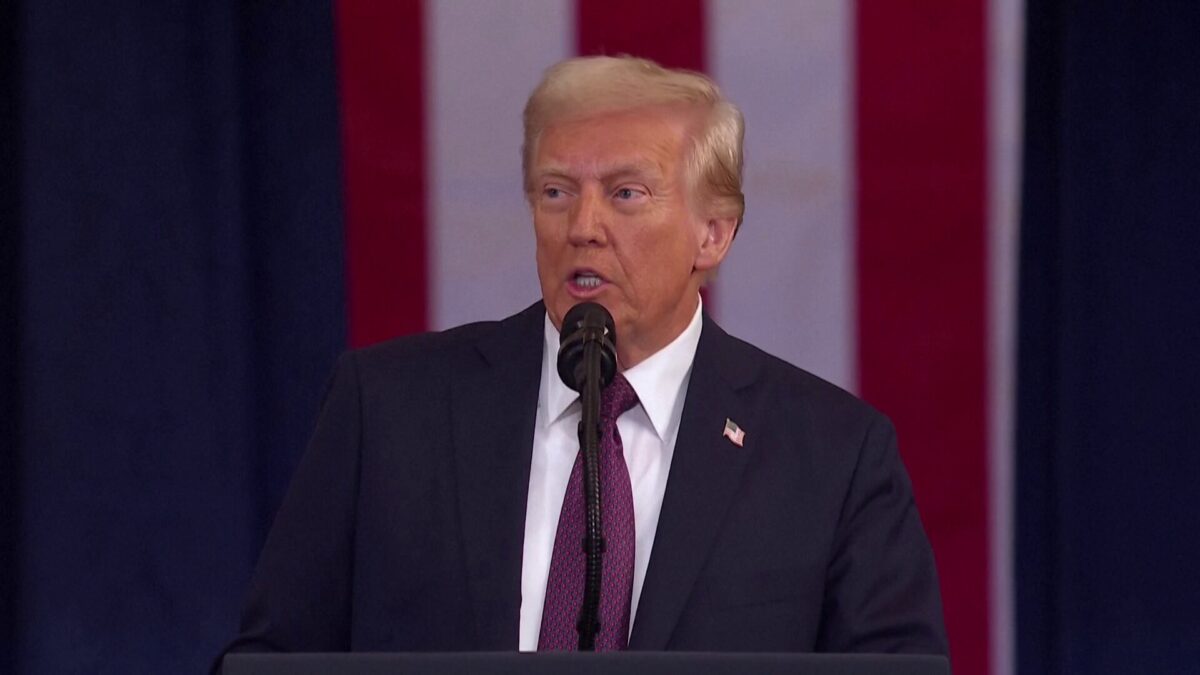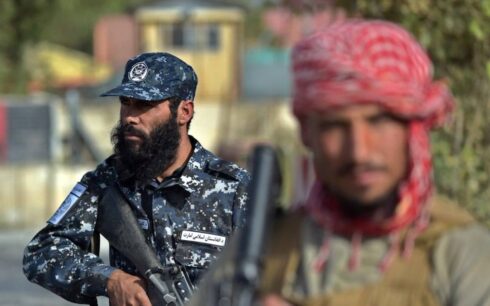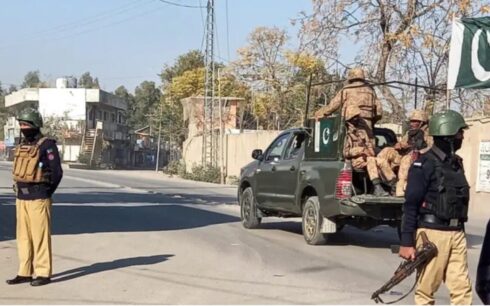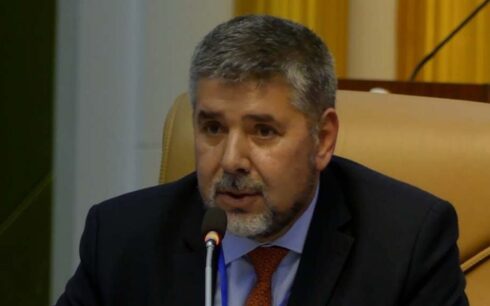President Trump has repeatedly and clearly spoken about the weapons left behind in Afghanistan and their value, both during his election campaign and recently with the media. He has consistently described the manner of withdrawal from Afghanistan and its consequences, including the fact that American weapons left behind are now in the hands of the Taliban and other terrorist groups and criminal networks, as a reckless action and the most shameful moment in American history.
Now that Mr. Trump has officially started his tenure as the President of the United States, this discussion has emerged seriously in political circles and expert analyses in the media. The question is, what will Trump actually do about the weapons left behind in Afghanistan, and is what he says truly feasible?
This article will briefly review U.S. assistance to the Afghan national defence and security forces over the two decades during the existence of the Afghan government under the name Islamic Republic of Afghanistan and will examine the operational feasibility of Trump’s statements. It will also attempt to answer the question: which weapons is Mr. Trump referring to? What is the scale of these weapons, and who currently controls them? Is it possible to return them to the U.S.?
What weapons is Trump referring to?
President Trump has repeatedly referred to weapons he believes belong to the U.S. military forces, left behind in Afghanistan due to mismanagement and hasty withdrawal. However, up to now, neither Trump nor official U.S. government sources have provided a specific list or data about these weapons. What has been emphasized in Trump’s remarks is the value of these weapons, which he has claimed to be worth $80 billion. Some media outlets, while fact-checking Trump’s claimed figures, argued that this amount was exaggerated and incorrect. However, other outlets, including CNN in April 2022, reported that U.S. Pentagon officials had confirmed that military equipment worth $7 billion, including weapons, ammunition, vehicles, airplanes, and helicopters, remained in Afghanistan.
After 2014, when the responsibility for securing Afghanistan was officially handed over to the Afghan National Defence and Security Forces (ANDSF), a large portion of NATO forces, especially the U.S., withdrew from the country. Many of their weapons, vehicles, and military equipment were left in military bases across Afghanistan. These weapons were gathered in a few major military hubs, such as the main RS base in Shash-Darak PD9 Kabul, Kabul Airport, Bagram Airport, Kandahar Airport, Khost Airport, Herat Airport, and Mazar-e-Sharif Airport. Several months before the fall of Afghanistan, international forces withdrew from most of these centres, leaving only Kabul Airport and their main base in Shash-Darak PD9 Kabul. I personally led the committee of MOI for the handover of airports to the Afghan forces and recall that when international forces were leaving their military facilities, they took most of their weapons, vehicles, and equipment with them. Only technical equipment like generators, communication operators, and empty containers for storage or disposal, along with a small amount of ammunition, were handed over to Afghan forces.
Reliable reports from media and official U.S. agencies indicate that between 2004 and 2016, the U.S. provided 599,690 firearms, including both light and heavy weapons, to the Afghan National Army and Police. The majority of these were small arms, such as M16s, M4s, and sniper rifles, with a total of 358,530 rifles distributed primarily to the Afghan National Army. During the same period, 16,191 pieces of support equipment, including night vision cameras, communication monitoring devices, small reconnaissance unmanned aerial vehicles (UAVs) called ScanEagle, and surveillance balloons, were supplied to Afghan security forces. The majority of these consisted of night vision cameras (16,035)
In the aviation sector, between 2004 and 2016, a total of 208 aircraft were provided to Afghan defence and security forces. These included 110 helicopters such as MI-17 and MD-530, 60 transport /Cargo airplanes including C-208, C-128, C-130, T-182, G-222, and 20 Light attack airplanes A-29, and 18 Intelligence, reconnaissance, and surveillance airplanes, PC-12.
During this period, the United States also provided 75,898 various types of vehicles, such as Rangers, Humvees, trucks, and tanks, to the Afghan security and defense forces. The majority of these consisted of 42,604 Ranger vehicles and 22,174 Humvees, which were the most commonly, used vehicles in the daily operations of security and defence units. However, a significant portion of them lost functionality due to explosions, suicide attacks, and prolonged use. Nevertheless, according to a report by The Independent on December 25, 2024, regarding the fate of American military Humvees in Afghanistan, despite U.S. efforts to destroy these vehicles before their withdrawal, a significant number of them ended up in the hands of the Taliban.
All of these materials were distributed to various units of the Afghan Army and Police and were repeatedly presented by the U.S. as aid to Afghanistan’s security and defence forces. Based on this approach, these weapons and vehicles belonged to the Afghan security and defence forces, not the U.S. military.
Is the transfer of these weapons possible?
Given that the Taliban, as a highly radical group with a history of terrorism, now controls these weapons, and several other groups, such as al-Qaeda and ISIS, have access to them, along with organized criminal networks, the practicality of Trump’s claims seems highly unlikely.
Reports from credible sources indicate that the Taliban has looted large quantities of these weapons, vehicles, and equipment since taking control of various districts and provinces. These weapons have flooded the black market within Afghanistan and in tribal areas of Pakistan. Over the past three years, there have been reports of U.S. weapons being found in Kashmir and the Middle East, and several instances where ISIS-KP has used these weapons in their attacks. Recently, an image shared by Telegram channels close to the Iranian government showed Iranian Special Forces using a significant number of M4 American rifles. Although the exact source of these weapons is unclear, experts believe the primary culprit behind their sale is the Taliban.
Now, assuming that everything Mr. Trump has mentioned is true and based on U.S. classified documents, is it possible to return these weapons to the U.S.? As mentioned above, Afghanistan under Taliban rule has become a haven for terrorism and terrorist groups, making it virtually impossible to control or retrieve these weapons. Even if the U.S. were willing to negotiate with the Taliban, returning all of these weapons and equipment would be impossible due to the factors discussed.
In the most optimistic scenario, if all conditions were to align, collecting and returning these weapons would require significant time, funding, and logistics.
In my opinion, the solution lies not in retrieving these weapons but in targeting the root of tyranny and terrorism—the Taliban regime—so that the misuse of these weapons can be prevented by establishing a legitimate, powerful, and accountable government, based on the will of the people and a decentralized structure.
The risks these weapons pose to regional and global security
Islamic jihadist groups based in Afghanistan, such as the Taliban as the main umbrella, al-Qaeda, TTP, ISIS-KP, Ansarullah of Tajikistan, the East Turkistan Islamic Movement, Jaish Muhammad, Sipah-e-Sahaba, the Islamic Movement of Uzbekistan, and other groups, are inherently a threat to Afghanistan’s national security, the region, and the world due to their radical ideology and terrorist behaviour. These groups are consistently attempting to exploit Islam to create insecurity around the world.
If these groups gain access to advanced weapons and military equipment, as well as large financial resources derived from organized crime, their operational capabilities and power to create threats and conduct large-scale operations inside Afghanistan and the region will undoubtedly increase. As we have witnessed, since the Taliban’s rise to power, the operational capabilities of groups like TTP and Jaish al-Adl in Pakistan and Iran have significantly improved, mainly due to their access to new weapons and equipment.
Moreover, the increasing capabilities of these groups will inspire other terrorist groups and radicalized individuals around the world to expand their own terrorist activities. The threats from these groups are not limited to the region; their ability to attract and lead other terrorist groups in different countries can have a global impact on security. Particularly as European and American countries are more exposed to terrorist threats due to internal challenges and global instability, these groups may act as a catalyst for new attacks. Furthermore, clandestine communications between terrorist groups across different countries could spread these threats and lead to the transfer of resources, including weapons and funds, to global networks.
Regardless of whether Mr. Trump and his team in the U.S. government will be serious in fulfilling this decision, the continuation of the current situation in Afghanistan is undoubtedly an enormous and irreparable threat to international security. The time has come for serious and immediate actions to address these threats. The countries of the world must coordinate and implement effective and targeted actions against terrorist and radical groups in Afghanistan and the bordering regions. In this regard, international cooperation and increasing political and economic pressures on the Taliban regime and its associated jihadist groups are essential. These programs must include preventive measures, strengthening intelligence systems, and supporting local communities to counter the spread of extremist ideologies. Otherwise, sooner or later, the terrorist threats from Afghanistan will spread to other parts of the world, and international security will be faced with a severe crisis.
Conclusion
Given the current situation, it seems that President Trump, by raising this sensitive and provocative issue to shape the public perception in the United States, is attempting to use it as a tool to garner domestic votes and to pressure the Taliban into complying with the Doha Agreement or subsequent U.S. plans in Afghanistan, before it actually appears to be a reality. Otherwise, a large portion of the remaining weapons is under the control of the Taliban, ISIS-KP, and other terrorist groups, and Trump currently has no operational tools or strategies in Afghanistan to deal with them. This indicates that such a promise is, in fact, nothing more than the simplest of rhetoric.
To achieve this goal, it is necessary to support the anti-Taliban factions and the people of Afghanistan to establish a lawful government that can counter this threat.
Besmillah Taban, a PhD student in Security Studies at JU, served in various positions within the Afghanistan National Police (2002-2021), including as the Head of the Crime Investigation Department (CID). He can be reached on the social media platform X at @BesmillahTaban.
Opinions expressed in this article are those of the author and do not necessarily reflect the views of this publication.





